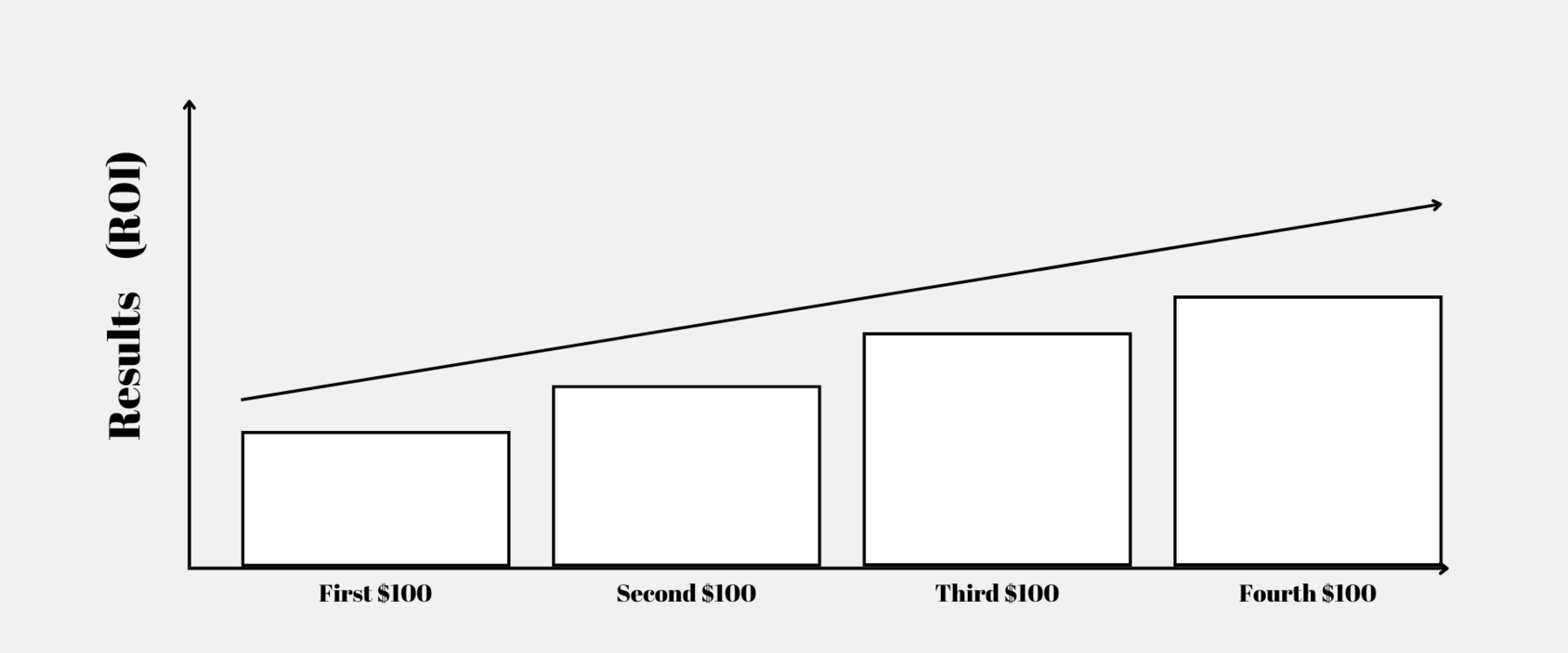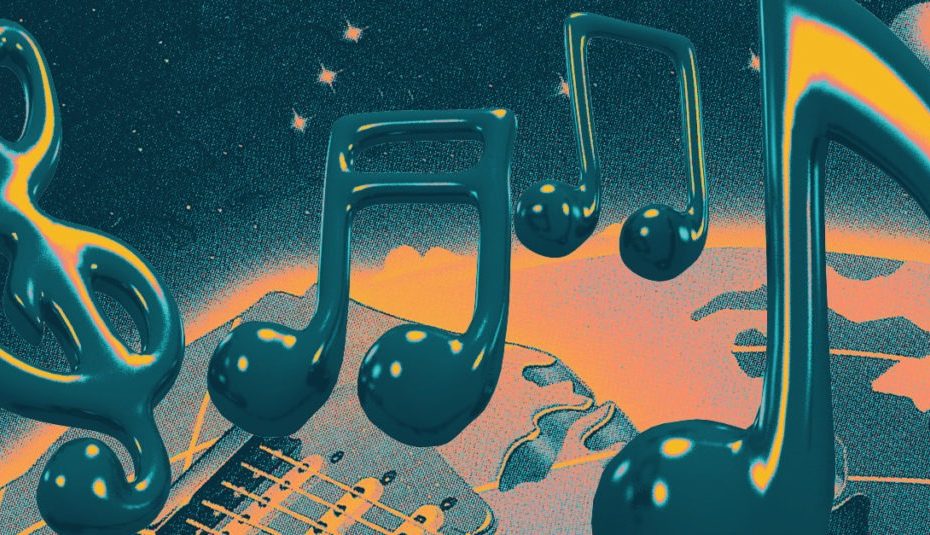All right, time to get super practical.
Last week, I offered up a reflective take on the value of rest using mountain hikes as a metaphor. Since you probably don’t want me to philosophize every week, today, we’re back to tactics.
Someone asked me this question last week:
“If you don’t yet have many fans but have a lot of singles that are ready to launch, what would you prioritize in your promotional strategy, assuming you have say 4 hours and about $100-200 to spend promoting a single?”
“I know the answer depends on the musician’s exact goals (greater exposure in my case), but I still wonder how you might maximize dollars and time spent in a scenario like this?”
I like it. Here are my as-practical-as-possible thoughts:
First, I think it’s important to clarify whether you’re viewing those four hours and that $100-$200 as a one-time spend – or if you’re willing to put that in for each single consistently over the long haul.
I’ve said it before and I’ll say it another million times: As much as it’s possible for you…
Try not to view promo as a one-time thing.
The truth is that you’ll get better results for the same spend over time.

This phenomenon is true for almost anything you choose to spend time or money on.
Let’s say, for example, you spend $100 on SubmitHub and get a 15% approval rate, which is about average. That’ll result in about 6-10 placements, depending on how expensive your submissions are.
But, the next time you spend $100 on SubmitHub, you can submit to the 6-10 curators who covered your previous single; they’ll be more likely to cover you again. Then you submit to another 50 or so other curators, too, and you’ll probably be able to beat your previous return.
Or, let’s say you spend $100 on ads. Your first campaign probably won’t be super optimized. But, over the next couple of hundred dollars, you’ll be able to home in your audience, and you’ll probably get more clicks and streams for the same cost.
I think this long-term mindset is probably the most important part of promo, because the truth is that most people give up before the going gets good.
But I realize this is all kind of beating around the bush; your real question is, “What the heck should I be doing?” And while there’s not really a “right” answer (because, as you point out, your goals will inform your path), there are a couple things I’d probably do.
On the first single…
I’d spend my budget on SubmitHub and my time on playlist pitching.
On SubmitHub, I’d be looking to get a couple of decent articles written about my music. Realistically, I wouldn’t be shooting for coverage in Earmilk or something; I’d be shooting for good pieces in what I call “bedroom blogs” – outlets run by individuals (probably from their bedrooms) who write well and care about music.
The rationale: Later, I’m going to focus on getting more ears to my music, but first, I want to establish some kind of story for those future fans to enter into.
Basically, when people google the name of my project, I want them to see that someone other than me is telling my story online. This is an easy point of social proof, and it could be the difference between a would-be fan finding me and going, “Oh, other people like this, must be cool stuff,” or going, “Mm, this seems like a dead project – I’m not interested.”
(There are other points of social proof, obviously, but this one is so simple to build, and you really only need to do it like once a year for it to feel relevant / recent.)
For playlist pitching, I’d look up 10 similar-sounding artists who aren’t too big yet and see what playlists they’re on. I’d make a list of every playlist I thought would work for my music, making sure to check playlist quality as I went.
Then I’d pitch every seemingly-good curator whose contact info I could find, making a quick case for why my track fit each playlist and asking them if they’d include it.
(And I’d probably use something like Artist.Tools to save time / make finding curators easier.)
The rationale: With limited time and money, I’d probably look to use Spotify as my primary traffic source – meaning, the main way I’d look to find new ears would be via Spotify.
Playlist pitching is a grind. Honestly, in four hours, I’d hope to get maybe one or two placements. But, over the course of a bunch of single releases, I’d expect things to build; I’d be going back to curators who’d placed me before.
So, on the second single…
I’d spend my money on ads or a playlist service, and I’d spend my time on playlist pitching.
With my money: If I could commit to $200 / month for 3+ months, I’d probably run ads from Facebook -> Spotify. That wouldn’t get me anything too big too fast, but it would put me on a path of near-guaranteed steady growth over time. If I could commit to a whole year of this, I’d be in a very good place.
If I wasn’t quite comfortable with that commitment, I’d probably pay a playlist pitching service. This is the equivalent of betting on a risky stock; chances are that I’d get on a couple of playlists for a few weeks, get 10k+ streams, and then get bounced back to ground zero when my song was removed.
But there’d also be a chance that, after the initial spike, I’d see legit algorithmic growth – meaning that Spotify would keep showing my song to people for months or even years after that initial campaign.
Based on my experience using these services, I’d say this happens maybe 20% of the time. The other 80% of the time, you get the spike and then you’re back down.
But if I’m not willing to spend money consistently – if I’m limiting my at-bats – I’d rather swing for the fences with playlists than square around to bunt with ads.
With my time: I’d send more pitches to more playlist curators, hoping for a few more placements this time.
On the third single…
I’d do the same thing I just outlined above.
And then the same thing for the fourth single.
And then the fifth.
Basically, rinse and repeat for a year, then step back and see where you’re at. One year and 10-12 singles in – if you can actually commit to all of that – you should expect to have a song over 100k streams, a few hundred followers, and a few thousand monthly listeners.
That’s most of what I’d do. But, that said..
What’s missing from the approach I just outlined?
To be honest, a lot ha. There’s a never-ending tidal wave of things you could be doing. But, in addition to what I’ve outlined above, there are at least two things that I think you probably should work in, even if you can only spare like 30 mins a week:
1. Telling your story on some social platform.
Contrary to what a lot of people think, you don’t need to be huge on social to be successful as an artist, especially if you’re treating Spotify as your primary traffic driver.
For example, I’m a recent fan of John Van Deusen. I don’t know him personally, but he seems to be making a living making music. I found him on Spotify, where he has 1M streams on his top song and 62k monthly listeners.
Pretty good, right? And even better when you contrast that with his socials: His biggest channel is Instagram, where he has 3k followers.
Now, idk everything he’s doing, but I’m pretty confident that he’s not treating social media as his primary fan-finding channel.
But… he does have an Instagram, and following it has given me much more of an appreciation for who he is / what he’s about. It’s enabled me to be more of a fan.
You’ve got to have a place where you tell your story, apart from the platform people are streaming your music. You don’t have to spend too much time on social if you don’t treat it as a fan-finding platform – but the sad truth of the 21st century is that you probably do have to spend some time there to prove you have a pulse.
Sorry.
2. Creating some way for your audience to more meaningfully support you.
Eventually, if you really want this music thing to be sustainable and you actually want a deep connection with your audience, you’ll need to offer some kind of action they can take to signify their support.
I’ve got two words for you: Custom stickers.
Kidding. I mean, stickers are cool, but you’ll eventually want to offer people more than that. This is where email lists, texting groups, VIP communities, Patreon tiers, special events, and a whole host of other things come into play.
Your imagination is the limit, but at some point, you’ll need to start doing something that enables deeper engagement with the people who really like what you’re doing.
And you probably shouldn’t wait too long to start; I’d recommend at least setting up an email opt-in ASAP, to give people an easy next step for supporting you. Because, as people find you on Spotify over the course of the next year, some of them will want to enter into a deeper relationship.
Give them that option from the get-go.
Final thoughts…
Shoot. I just read my advice back to myself and found it intimidating / basically a long spiel on the value of hard work. But I do think it’s realistic; the truth is, reaching people is hard.
I feel that. Part of my job is running pitching campaigns, and even when you know what you’re doing, emailing a ton of people to get a few responses is time-consuming / not very fun. Promo matters, but that doesn’t mean it’s not a grind.
But, I promise you that a) if the music is good and b) if you really can be consistent, you will start to find an audience.
And you and I both know that that makes it all worth it.
There’s literally nothing better than meaningfully connecting with people. It’s worth the vulnerability of releasing music, the hours of emailing curators, the pain of paying Facebook, and the frustration of posting social media. Connection is the heart of life.
Don’t give up.
Here’s hoping this spiel helped, and here’s wishing you good luck.
The post How to Get Started with Music Promotion in 2022 appeared first on Two Story Melody.
